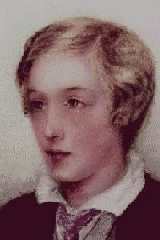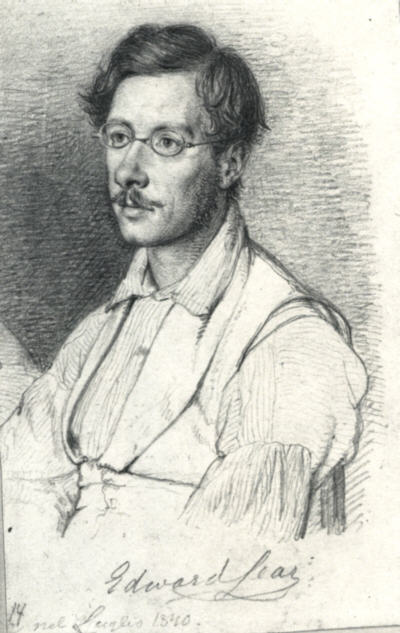|
Broken Rhyme
Broken rhyme, also called split rhyme, is a form of rhyme. It is produced by dividing a word at the line break of a poem to make a rhyme with the end word of another line. Gerard Manley Hopkins' poem ''The Windhover'', for example, divides the word "kingdom" at the end of the first line to rhyme with the word "wing" ending the fourth line. Hopkins is rare in using the device in serious poems. More commonly, the device is used in comic or playful poetry, as in the sixth stanza of Edward Lear's "How Pleasant to Know Mr. Lear" or in Elizabeth Bishop's "Pink Dog": ::Sixth Stanza of "How Pleasant to Know Mr. Lear": ::When he walks in waterproof white, ::The children run after him so! ::Calling out, "He's gone out in his night- ::Gown, that crazy old Englishman, oh!" Here, the word "nightgown" has been split over the third and fourth lines so that the first and third lines form a tail rhyme. Singer-songwriter and satirist Tom Lehrer Thomas Andrew Lehrer (; born April 9, 1928) ... [...More Info...] [...Related Items...] OR: [Wikipedia] [Google] [Baidu] |
Rhyme
A rhyme is a repetition of similar sounds (usually, the exact same phonemes) in the final stressed syllables and any following syllables of two or more words. Most often, this kind of perfect rhyming is consciously used for a musical or aesthetic effect in the final position of lines within poems or songs. More broadly, a rhyme may also variously refer to other types of similar sounds near the ends of two or more words. Furthermore, the word ''rhyme'' has come to be sometimes used as a shorthand term for any brief poem, such as a nursery rhyme or Balliol rhyme. Etymology The word derives from Old French ''rime'' or ''ryme'', which might be derived from Old Frankish ''rīm'', a Germanic term meaning "series, sequence" attested in Old English (Old English ''rīm'' meaning "enumeration, series, numeral") and Old High German ''rīm'', ultimately cognate to Old Irish ''rím'', Greek ' ''arithmos'' "number". Alternatively, the Old French words may derive from Latin ''rhythmus'', f ... [...More Info...] [...Related Items...] OR: [Wikipedia] [Google] [Baidu] |
Gerard Manley Hopkins
Gerard Manley Hopkins (28 July 1844 – 8 June 1889) was an English poet and Jesuit priest, whose posthumous fame placed him among leading Victorian poets. His prosody – notably his concept of sprung rhythm – established him as an innovator, as did his praise of God through vivid use of imagery and nature. Only after his death did Robert Bridges publish a few of Hopkins's mature poems in anthologies, hoping to prepare for wider acceptance of his style. By 1930 Hopkins's work was seen as one of the most original literary advances of his century. It intrigued such leading 20th-century poets as T. S. Eliot, Dylan Thomas, W. H. Auden, Stephen Spender and Cecil Day-Lewis. Early life and family Gerard Manley Hopkins was born in Stratford, EssexW. H. Gardner (1963), ''Gerard Manley Hopkins: Poems and Prose'' Penguin p. xvi. (now in Greater London), as the eldest of probably nine children to Manley and Catherine Hopkins, née Smith. He was christened at the Anglican churc ... [...More Info...] [...Related Items...] OR: [Wikipedia] [Google] [Baidu] |
Edward Lear
Edward Lear (12 May 1812 – 29 January 1888) was an English artist, illustrator, musician, author and poet, who is known mostly for his literary nonsense in poetry and prose and especially his limericks, a form he popularised. His principal areas of work as an artist were threefold: as a draughtsman employed to make illustrations of birds and animals; making coloured drawings during his journeys, which he reworked later, sometimes as plates for his travel books; and as a (minor) illustrator of Alfred, Lord Tennyson's poems. As an author, he is known principally for his popular nonsense collections of poems, songs, short stories, botanical drawings, recipes and alphabets. He also composed and published twelve musical settings of Tennyson's poetry. Biography Early years Lear was born into a middle-class family at Holloway, North London, the penultimate of 21 children (and youngest to survive) of Ann Clark Skerrett and Jeremiah Lear, a stockbroker formerly working for the f ... [...More Info...] [...Related Items...] OR: [Wikipedia] [Google] [Baidu] |
Elizabeth Bishop
Elizabeth Bishop (February 8, 1911 – October 6, 1979) was an American poet and short-story writer. She was Consultant in Poetry to the Library of Congress from 1949 to 1950, the Pulitzer Prize winner for Poetry in 1956, the National Book Award winner in 1970, and the recipient of the Neustadt International Prize for Literature in 1976. Dwight Garner argued that she was perhaps "the most purely gifted poet of the 20th century". Early life Bishop, an only child, was born in Worcester, Massachusetts, to William Thomas and Gertrude May (Bulmer) Bishop. After her father, a successful builder, died when she was eight months old, Bishop's mother became mentally ill and was institutionalized in 1916. (Bishop would later write about the time of her mother's struggles in her short story "In the Village".) [...More Info...] [...Related Items...] OR: [Wikipedia] [Google] [Baidu] |
Tail Rhyme
Tail rhyme is a family of stanzaic verse forms used in poetry in French and especially English during and since the Middle Ages, and probably derived from models in medieval Latin versification. Michael Drayton's "Ballad of Agincourt", first published in 1605, offers a simple English example, rhymed AAABCCCB; the shorter (dimeter) B-lines form the 'tail' lines and appear at regular intervals among the longer (trimeter) lines: Fair stood the wind for France, When we our sails advance, Nor now to prove our chance, Longer will tarry; But putting to the main, At Caux, the mouth of Seine, With all his martial train, Landed King Harry. (lines 1–8) However, tail rhyme stanzas can take many forms, potentially containing either more or fewer lines than this example. Tail rhyme is a principle of construction, not one set pattern; the " Burns stanza" is an example of a specific pattern which forms a sub-type of tail rhyme. __TOC__ Form A tail rhyme stanza is united by intermittent li ... [...More Info...] [...Related Items...] OR: [Wikipedia] [Google] [Baidu] |
Tom Lehrer
Thomas Andrew Lehrer (; born April 9, 1928) is an American former musician, singer-songwriter, satirist, and mathematician, having lectured on mathematics and musical theater. He is best known for the pithy and humorous songs that he recorded in the 1950s and 1960s. His songs often parodied popular musical forms, though he usually created original melodies when doing so. A notable exception is " The Elements", in which he set the names of the chemical elements to the tune of the " Major-General's Song" from Gilbert and Sullivan's '' Pirates of Penzance''. Lehrer's early musical work typically dealt with non-topical subject matter and was noted for its black humor in songs such as "Poisoning Pigeons in the Park". In the 1960s, he produced a number of songs that dealt with social and political issues of the day, particularly when he wrote for the U.S. version of the television show '' That Was the Week That Was''. The popularity of these songs has far outlasted their topical subjec ... [...More Info...] [...Related Items...] OR: [Wikipedia] [Google] [Baidu] |
Enjambement
In poetry, enjambment ( or ; from the French ''enjamber'') is incomplete syntax at the end of a line; the meaning 'runs over' or 'steps over' from one poetic line to the next, without punctuation. Lines without enjambment are end-stopped. The origin of the word is credited to the French word ''enjamber'', which means 'to straddle or encroach'. In reading, the delay of meaning creates a tension that is released when the word or phrase that completes the syntax is encountered (called the rejet); the tension arises from the "mixed message" produced both by the pause of the line-end, and the suggestion to continue provided by the incomplete meaning.Preminger 359 In spite of the apparent contradiction between rhyme, which heightens closure, and enjambment, which delays it, the technique is compatible with rhymed verse. Even in couplets, the closed or heroic couplet was a late development; older is the open couplet, where rhyme and enjambed lines co-exist. Enjambment has a long histo ... [...More Info...] [...Related Items...] OR: [Wikipedia] [Google] [Baidu] |



